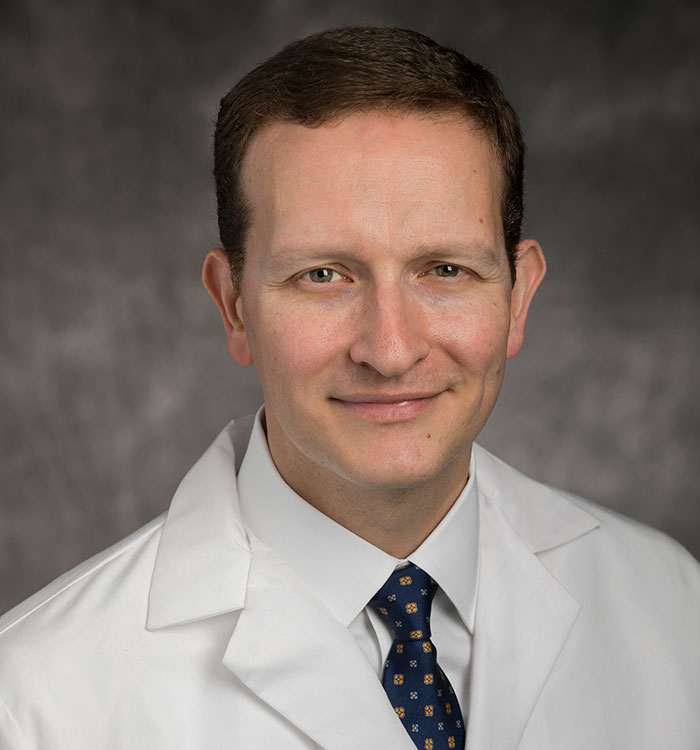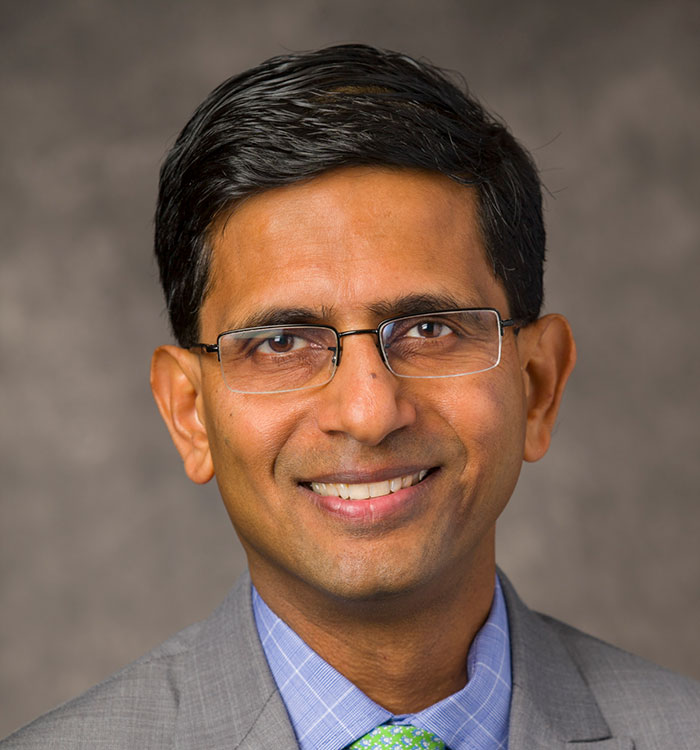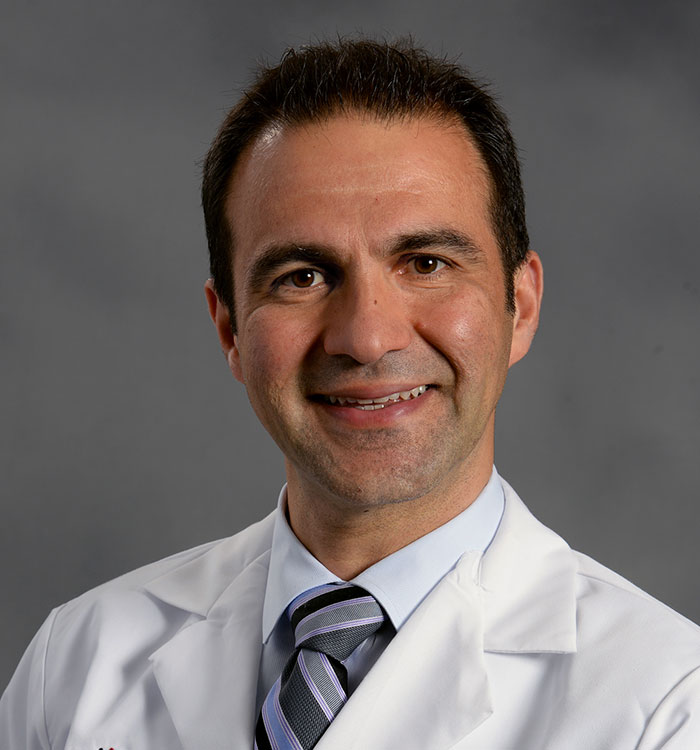University Hospitals Cardiologists Reimagine Care Delivery in the Era of Coronavirus
June 25, 2020
Early Learnings from COVID-19
Innovations in Cardiovascular Medicine & Surgery | Summer 2020 issue
As COVID-19 swept across continents, medical communities worldwide grappled with care delivery systems upended by coronavirus and the accompanying public panic and uncertainty.
At University Hospitals Harrington Heart & Vascular Institute, physicians and researchers swiftly identified a public health crisis brewing within the pandemic as the number of patients presenting with cardiac symptoms dropped precipitously across the 18-hospital system. The mission became clear: optimize treatment for COVID-19-positive patients within Northeast Ohio while educating the community about the safety and importance of seeking crucial — and sometimes life-saving — care should they experience symptoms of cardiac distress.
Fortunately, University Hospitals Cleveland Medical Center was well-positioned as a leading healthcare system to quickly retool care delivery while researching novel therapies. As a result, colleagues have been able to collaborate and respond proactively to this unprecedented global crisis. While many initiatives are underway, early efforts have included:
- Infusing convalescent plasma into COVID-19 patients
- Addressing patient fear and presentation delay
- Shaping the future of care delivery
Infusing convalescent plasma into COVID-19 patients
 Eiran Gorodeski, MD
Eiran Gorodeski, MDIn addition to offering treatments fast-tracked by the Food and Drug Administration (FDA), such as Remdesivir and stem cell therapy, University Hospitals is the only health system in Northeast Ohio and one of three in the state participating in an FDA-approved observational cohort study of convalescent plasma.
“The literature shows that COVID-19 patients who present with even minimal myocardial injury have increased risks for significantly worse outcomes,” says Eiran Z. Gorodeski, MD, MPH, FACC, FHFSA, Medical Director, Advanced Heart Failure & Transplant Center and Director, James and Angela Hambrick Center for Cardiac Recovery, University Hospitals Harrington Heart & Vascular Institute; Associate Professor of Medicine, Case Western Reserve University School of Medicine. “Observational data of convalescent plasma in other viral outbreaks have demonstrated lower viral loads, shorter hospital stays and reduced mortality. We are hopeful that this treatment should work for COVID-19, and hope to learn where in the disease course it is most effective.”
Eligibility criteria include evidence of myocardial injury, impending respiratory failure and/or intubation within the prior 24-hour period.
Dr. Gorodeski and co-investigators, Steven Filby, MD, cardiologist, and Katharine Downes, MD, pathologist, are collaborating with The Christ Hospital and Mercy Health in Cincinnati to enroll a total of 100 patients in this groundbreaking study. Antibody-rich donor blood is rapidly routed through regional and national blood centers from patients who have recovered from COVID-19 for infusion into these critically ill patients.
“The fact that we can offer this experimental therapy is remarkable,” Dr. Gorodeski says. “We are grateful to COVID-19 survivors who are willing to donate plasma and also for the philanthropic support we have received to fund this vital endeavor.”
Addressing patient fear and presentation delay
 Sanjay Rajagopalan, MD
Sanjay Rajagopalan, MDWhile Northeast Ohio has not become a pandemic hot spot, physicians have seen notable evidence of people too apprehensive to seek care. “Patients are unnecessarily postponing medical treatment until they are often in dire situations,” says Sanjay Rajagopalan, MD, Chief, Division of Cardiovascular Medicine at UH Harrington Heart & Vascular Institute; Herman K. Hellerstein MD Professor of Medicine and Radiology and Director, Cardiovascular Research Institute, Case Western Reserve University School of Medicine. “University Hospitals is working to reassure patients of our comprehensive safety protocols, which include health screenings, social distancing, hand hygiene, schedule management and enhanced cleaning procedures.”
Dr. Rajagopalan also notes the critical role masks play in decreasing the integral of exposure in healthcare facilities and in general public settings. In a recent editorial in Heart,1 he and fellow authors discuss the potential for masks to reduce COVID-19 transmission. “Current testing shows that SARS-CoV2 is highly expressed in the nasal epithelium and upper respiratory tract,” he says. “Modelling studies suggest that consistent use of masks can reduce the inhalation of both droplets and microparticles.”
Despite efforts to educate and reassure the public, a confluence of factors is influencing patients’ decisions to stay home. “Reports from around the world indicate that patients have delayed seeking cardiac care during the pandemic due to fear of contracting COVID-19 as well as confusion between symptoms of coronavirus and those of cardiac disease,” says Mehdi Shishehbor, DO, MPH, PhD, Director of the Interventional Cardiovascular Center and Co-Director of the Vascular Center at UH Harrington Heart & Vascular Institute; Professor of Medicine, Case Western Reserve University School of Medicine.
UH Harrington Heart & Vascular physicians recently published a study of systemwide pre- and post-COVID-19 ST‐elevation myocardial infarction (STEMI) activations in Catheterization & Cardiology Interventions.2 “What we found is that post-COVID-19 patients with STEMI presented with a greater degree of myocardial damage resulting from longer delay from symptom onset, as measured by higher initial troponin, lower initial LVEF [left ventricular ejection fraction] and new Q waves,” Dr. Shishehbor says. “This highlights the need for the medical community to continue to engage the public about the safety of our medical facilities and the importance of seeking timely medical care.”
Shaping the future of care delivery
 Mehdi Shishehbor, MD
Mehdi Shishehbor, MDMoving forward, the ability to monitor chronic conditions, manage medications and triage escalating symptoms will require an unprecedented transformation in care delivery. “We are re-engineering how we practice medicine,” Dr. Gorodeski says. “Ambulatory care is shifting to a hybrid model that will increasingly rely on virtual visits to help us maintain our connection to patients.”3
As recent admissions for cardiology have plummeted, there is growing concern of a significant spike in cardiac morbidity and mortality in the coming months. “During times of crisis, what we have seen is that cardiometabolic risk factors [CMRF] worsen,4 Dr. Rajagopalan says. “Interacting with patients via telemedicine has been quite effective in helping them get on the right path and better manage their risk factors.”
The realities of COVID-19 have fast-tracked easing of government and insurance restrictions to enable physicians to offer and seek reimbursement for virtual medicine. Because University Hospitals had been laying the groundwork for secure telemedicine platforms and demonstrating the feasibility of virtual visits, providers are better prepared to navigate this swift transition.
“Patients need to know that there are many ways to seek care in the current medical era,” Dr. Shishehbor says. “If people are afraid to come to the hospital, they can connect to us virtually or by phone. We don’t want them to wait until it is too late.”
For more information, contact Dr. Gorodeski at Eiran.Gorodeski@UHhospitals.org, Dr. Rajagopalan at Sanjay.Rajagopalan@UHhospitals.org or Dr. Shishehbor at Mehdi.Shishehbor@UHhospitals.org, or call the UH Harrington Heart & Vascular Institute at 216-553-1439.
References
- Rajagopalan S, Huang S, Brook RD. Flattening the curve in COVID-19 using personalized protective equipment: lessons from air pollution. Heart. Published Online First: 11 May 2020. doi: 10.1136/heartjnl-2020-317104
- Hammad, TA, Parikh, M, Tashtish, N, et al. Impact of COVID‐19 pandemic on ST‐elevation myocardial infarction in a non‐COVID‐19 epicenter. Catheter Cardiovasc Interv. 2020; 1– 7. doi: 10.1002/ccd.28997
- Eiran Z. Gorodeski, MD, MPH, FHFSA, Parag Goyal, MD, MSc, Zachary L. Cox, PharmD, FHFSA, et al. Virtual Visits for Care of Patients with Heart Failure in the Era of COVID-19: A Statement from the Heart Failure Society of America. Journal of Cardiac Failure. Published: 18 April 2020 doi: 10.1016/j.cardfail.2020.04.008
- Robert D. Brook, MD, Phillip Levy, MD MPH, Sanjay Rajagopalan, MD. Cardiovascular Perspective: Cardiometabolic Risk Factor Control During Times of Crises and Beyond. Circulation Quality and Outcomes.


